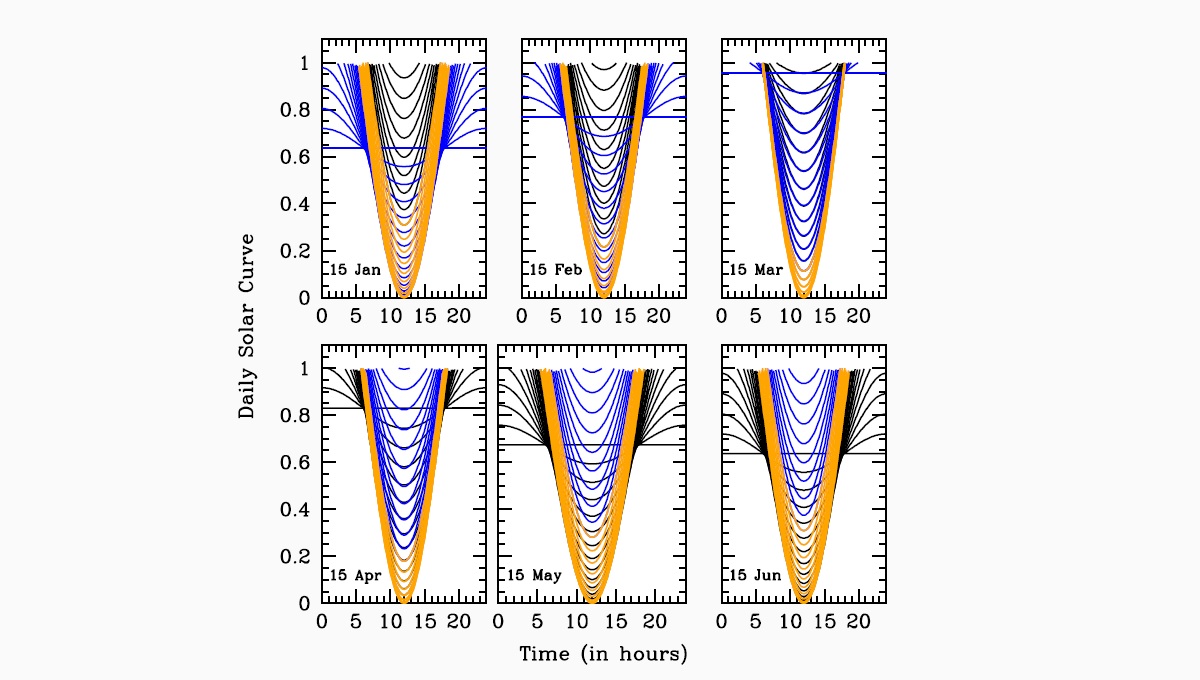Forcing Seasonality of influenza-like epidemics with daily Solar resonance
Publication date: 13/07/2020 – E&P Code: repo.epiprev.it/1923
Authors: Fabrizio Nicastro1, Giorgia Sironi2, Elio Antonello2, Andrea Bianco2, Mara Biasin3, John R. Brucato4, Ilaria Ermolli1, Giovanni Pareschi2, Marta Salvati5, Paolo Tozzi4, Daria Trabattoni3, Mario Clerici6
Abstract: Seasonality of acute viral respiratory diseases is a well-known and yet not fully understood phenomenon. Several models have been proposed to explain the regularity of yearly recurring outbreaks and the phase-differences observed at different latitudes on Earth. Such models take into account known internal causes, primarily the periodic emergence of new virus variants that evade the host immune response. Yet, this alone, is generally unable to explain the regularity of recurrences and the observed phase-differences. Here we show that seasonality of viral respiratory diseases, as well as its distribution with latitude on Earth, can be fully explained by the virucidal properties of UV-B and A Solar photons through a daily, minute-scale, resonant forcing mechanism. Such an induced periodicity can last, virtually unperturbed, from tens to hundreds of cycles, and even in presence of internal dynamics (host’s loss of immunity) much slower than seasonal will, on a long period, generate seasonal oscillations.
Cite as: Fabrizio Nicastro, Giorgia Sironi, Elio Antonello et. al. (2020). Forcing Seasonality of influenza-like epidemics with daily Solar resonance. E&P Repository https://repo.epiprev.it/1923
Topic: COVID-19
Key words: COVID-19, risonanza solare, stagionalità, UV,
AVVERTENZA. GLI ARTICOLI PRESENTI NEL REPOSITORY NON SONO SOTTOPOSTI A PEER REVIEW.
Forcing Seasonality of influenza-like epidemics with daily Solar resonance
Info
Affiliations:
1 talian National Institute for Astrophysics (INAF) – Rome Astronomical Observatory, Rome, Italy
2 Italian National Institute for Astrophysics (INAF) – Brera Astronomical Observatory, Milano/Merate, Italy
3 Department of Biomedical and Clinical Sciences L. Sacco, University of Milano, Milano, Italy
4 Italian National Institute for Astrophysics (INAF) – Arcetri Astrophysical Observatory, Firenze, Italy 5 Regional Agency for Environmental Protection of Lombardia (ARPA Lombardia), Milano, Italy
5 Regional Agency for Environmental Protection of Lombardia (ARPA Lombardia), Milano, Italy
6 Department of Pathophysiology and Transplantation, University of Milano and Don C. Gnocchi Foundation, IRCCS, Milano, Italy
Authors’ contributions: Same level of contribution for all authors
Competing interests: None
Funding disclosure: The work presented in this paper has been carried out in the context of the activities promoted by the Italian Government and in particular, by the Ministries of Health and of University and Research, against the COVID19 pandemic. A research grant from Falk Renewables partially supported this work.
Ethics committee approval: The study was based on publicly available aggregate data. No Ethics committee approval was necessary.
Copyright: Il detentore del copyright è l’autore/finanziatore, che ha concesso a “E&P Repository” una licenza per rendere pubblico questo preprint. The copyright holder for this preprint is the author/funder, who has granted E&P Repository a license to display the preprint in perpetuity.
Terms of distribution: CC BY

Figure 1 - The Solar Pump. Attenuation functions for the reproductive number Rt, due to the daily solar action. Each panel show solar attenuation curves for 36 Earth’s latitudes between -90 and -25 degrees south (blue), -25 – +25 degrees (orange) and 25–90 degrees north (black) at the 15th day of each of the first 6 months of the year, as labeled. The plotted function is (1 – sin(α)), where α is the solar height angle (complement to the Zenith angle: i.e. α=90 degrees at local noon) that depends on Earth’s latitude φ, sun’s declination δ, day of the year d and time of the day h
References & Citations
Google Scholar

